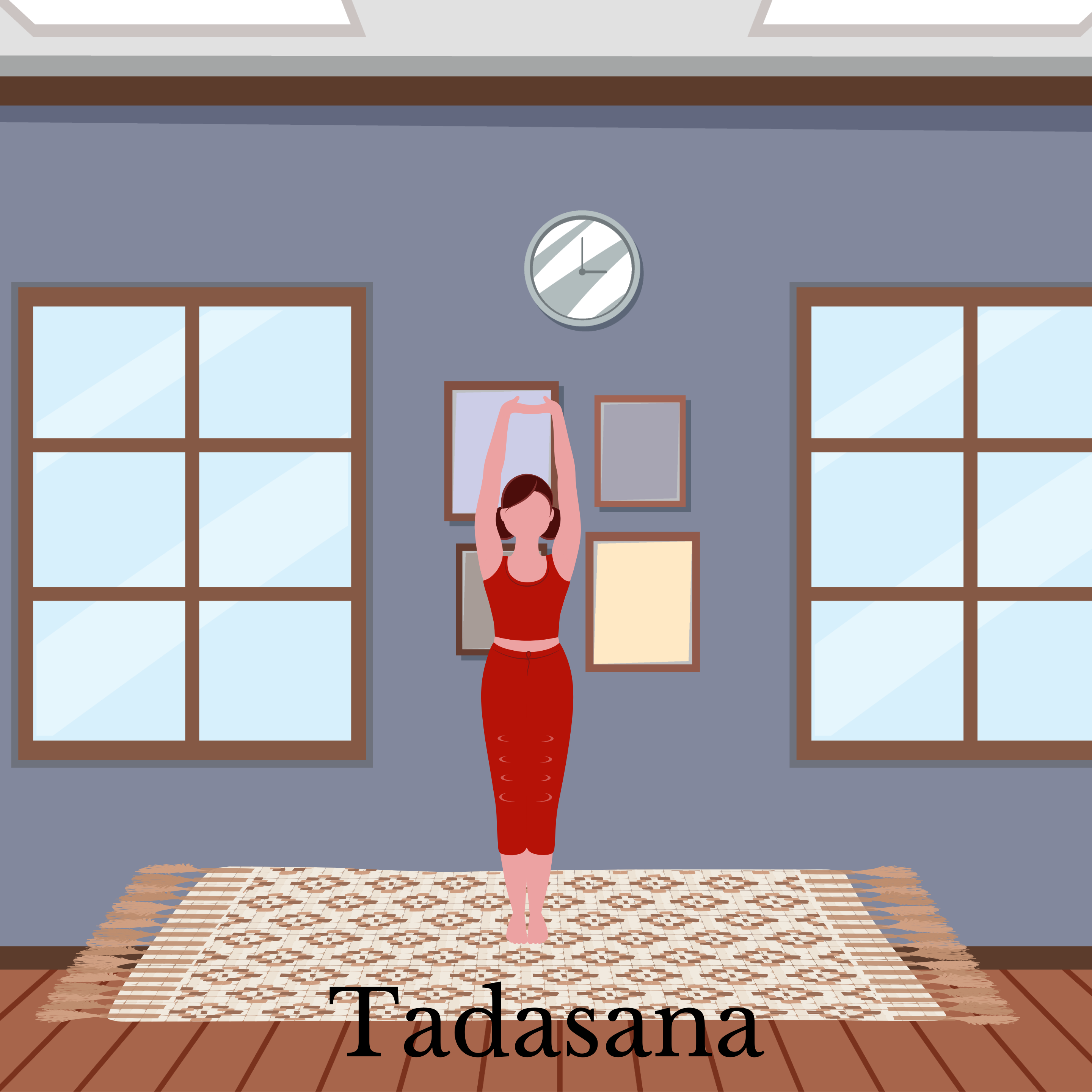Tadasana (Mountain Pose): The Foundation of Yoga
Find Strength, Stillness, and Balance from the Ground Up
In the vast landscape of yoga, where poses range from gentle stretches to intense backbends, Tadasana, or Mountain Pose, holds a uniquely profound place. Though it may appear simple on the surface, Tadasana is much more than just “standing still.” It is the foundation for nearly every standing yoga posture, emphasizing grounding, posture alignment, body awareness, and breath control.
Just like a mountain that stands tall, stable, and unmoved by external forces, Tadasana teaches us to find stillness amidst chaos. It reminds us that strength lies in stability and that inner peace begins with being grounded.
🧘♀️ What is Tadasana?
Tadasana (pronounced tah-DAH-sah-nah) is derived from the Sanskrit words:
-
Tada meaning “mountain” 🏔
-
Asana means “pose” or “posture”
Also known as Mountain Pose, Tadasana is a standing posture often used as a starting or resting position in many yoga sequences, particularly in Surya Namaskar (Sun Salutation). It brings attention to your body’s alignment and connects you to your breath—two vital elements of any yoga practice.
🪷 How to Practice Tadasana: Step-by-Step
Though simple in appearance, Tadasana requires precision and mindfulness. Here’s how to perform it correctly:
🌟 Step-by-Step Guide
-
👣 Start with the Feet
-
Stand upright with your feet together or hip-width apart (depending on comfort and body type).
-
Distribute your body weight evenly across all four corners of each foot—heel, ball of the big toe, and ball of the little toe.
-
-
🧍♂️ Engage the Legs and Core
-
Slightly lift your kneecaps by engaging the quadriceps.
-
Activate your inner thighs and draw your lower belly in slightly to support your spine.
-
Tuck the tailbone very gently—avoid exaggerating the pelvic tilt.
-
-
🌬 Elongate the Spine
-
As you inhale, feel the crown of your head lifting toward the sky.
-
Create length between each vertebra without puffing out the ribs.
-
Keep your chin parallel to the floor.
-
-
👐 Relax the Arms
-
Let your arms hang naturally by your sides, with palms facing inward or slightly forward.
-
Broaden your chest and roll your shoulders gently back and down.
-
-
👁 Find Your Drishti (Gaze)
-
Focus on a still point in front of you to help with balance and concentration.
-
This steady gaze helps center the mind.
-
-
🌬 Breathe Deeply and Hold
-
Breathe in and out through the nose, slowly and deeply.
-
Feel rooted through your feet while lifting through the crown of your head.
-
Hold the pose for 30 seconds to 1 minute.
-
-
🌿 Release with Awareness
-
Exhale softly and return to a relaxed standing position.
-
You may move into another standing pose or pause in stillness.
-
🌟 Benefits of Tadasana (Mountain Pose)
Though seemingly basic, the regular practice of Tadasana offers profound physical, mental, and energetic benefits:
💪 Physical Benefits
-
✅ Improves Posture: By aligning the spine and engaging the core, it corrects poor posture and reduces strain on the neck and lower back.
-
✅ Strengthens Legs & Core: Tadasana tones the thighs, knees, ankles, and abdominal muscles.
-
✅ Enhances Balance & Stability: It builds foundational strength and improves your overall balance.
-
✅ Boosts Circulation: Standing tall encourages better blood flow throughout the body.
-
✅ Relieves Back and Neck Tension: Encourages spinal alignment and muscular relaxation, easing minor aches.
-
✅ Aids Digestion: Gentle abdominal engagement stimulates digestive organs and improves function.
-
✅ Reduces Flat Feet: By lifting the arches and aligning the feet, it may prevent or reduce flat foot issues.
🧠 Mental & Emotional Benefits
-
🧘♀️ Cultivates Mindfulness: Staying still in Tadasana sharpens focus and mental clarity.
-
🌬 Deepens Breath Awareness: Promotes mindful breathing, which reduces anxiety and improves oxygen intake.
-
🌱 Encourages Grounding: The posture connects you to the earth, fostering a sense of emotional and energetic stability.
-
🔋 Energizing Yet Calming: Helps you feel both calm and alert—perfect for beginning or resetting your day.
⚠️ Precautions & Contraindications
While Tadasana is generally safe for most people, there are certain situations where caution or modifications are needed:
🚫 Who Should Avoid or Modify Tadasana
-
😵 Dizziness or Vertigo: People prone to lightheadedness should avoid lifting the head too high and should practice near a wall or seated if needed.
-
🩸 Low Blood Pressure (Hypotension): This pose may cause dizziness in those with very low blood pressure. Modify by using a wall or holding the pose for shorter durations.
-
🤰 Pregnancy: Especially in later trimesters, the shifting center of gravity may make this pose feel unstable. Practice under the guidance of a prenatal yoga teacher and consider widening the stance.
-
🦵 Injury or Pain: Those with acute pain in the knees, hips, back, or joints should avoid the pose until symptoms resolve. Always consult a doctor before returning to yoga.
-
👨⚕️ Medical Conditions: If you have any chronic conditions or have recently undergone surgery, seek guidance from a certified yoga instructor or healthcare provider before attempting Tadasana.
✨ Pro Tips for a Stronger Tadasana
-
🧘♂️ Practice barefoot for better grounding and sensory feedback.
-
📏 Use a mirror to check your alignment.
-
🧱 Beginners can stand against a wall to feel their spine’s position.
-
🎯 Use this pose to reconnect with your breath and presence between dynamic movements.
🏔 Final Thoughts: Embodying the Mountain
Tadasana may be the most unassuming yoga pose, yet it’s the cornerstone of the entire physical practice. It teaches us to stand tall, not just physically but emotionally and spiritually. Through it, we discover the power of stillness, the grace of alignment, and the strength found in simplicity.
In our fast-moving world, Tadasana reminds us that sometimes, simply standing still with awareness is the most powerful act of all.
So the next time you step onto your mat, don’t overlook Mountain Pose. Stand tall, breathe deep, root down—and rise.

